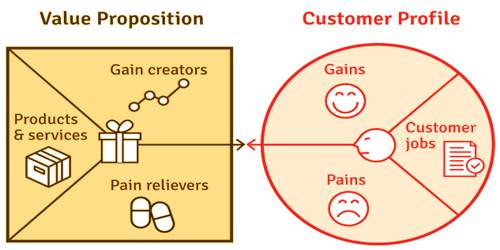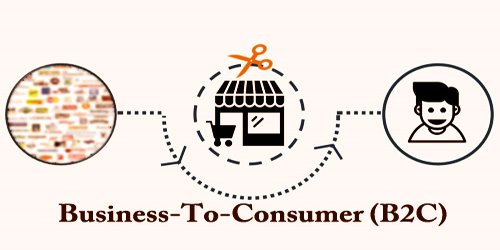A value proposition (VP) is a value commitment to be delivered, shared, and recognized; it is part of the overall marketing plan of a company. In essence, a value proposition defines what makes the product or service of the business appealing, why a consumer should buy it, and how the value of the product or service is distinguished from similar offers. It is also a belief from the customer about how value (benefit) are delivered, experienced, and purchased. The value proposition provides a declaration of intent or a press release that introduces a company’s brand to consumers by telling them what the corporate stands for, how it operates, and why it deserves their business.
Generally, the value proposition is addressed to the company’s target customers or target market segment. It can extend to all or parts of an entity, or to consumer accounts, or to goods or services. One part of the business plan is to build a value proposition. The plan takes the form of a brief, simple, and succinct statement of the customers’ tangible and intangible benefits to be offered. A successful value proposition should be persuasive and help turn an opportunity into a paying customer.

Value Proposition Canvas
The ideal proposition needs to convey the values easily to potential customers without requiring further clarification. Each proposal must be special since it is a tool for communicating a company’s differentiation points to the target customers. Developing a value proposition relies on a review and analysis of the advantages, costs, and value that a corporation can deliver to its customers, prospective customers, and other constituent groups within and out of doors the organization. It is also positioning of value, where:
Value = Benefits − Cost (cost includes economic risk).
A value proposition should clearly illustrate how a product meets a need, convey the details of its added profit, and state the reason why it’s better than comparable products on the market. To-the-point is the optimal value proposition which appeals to the best decision-making drivers of a client. It must not be confused with slogans and catchphrases, because the latter two might not clearly convey the advantages of an organization and its products.
Michael Lanning and Edward Michaels are credited with the expression “value proposition” (VP), which first used the term in a staff report for the consulting firm McKinsey and co. in 1988. A value proposition stands for a company’s pledge to a consumer or market segment. Developing a value proposition is a critical part of the marketing plan of an organization. Companies utilize this announcement to target clients who will profit most from utilizing the organization’s items, and this keeps up an organization’s monetary canal. Since the suggestion gives an organization a strategy to impact the dynamic of clients, it is every now and again showed on the organization’s/companies promoting materials, for example, a site.
A compelling value proposition meets three criteria:
- It’s specific: What are the unique benefits that will benefit our target customer?
- It’s pain-focused: How can our product solve the dilemma of the client or enhance his/her life?
- It’s exclusive: How is it attractive as well as exclusive? How well does it stress our competitive advantage and differentiate us from rivals?

Value Proposition Diagram Design
A significant problem that marketing managers need to address in designing campaigns is the development and implementation of a value proposition. Value ideas within a sector vary across sectors and across various consumer segments. When a visitor arrives on our platform, a value proposition should be at the front and center. Although it’s often found above the fold on the homepage, we should always bear in mind of other common entrance points (e.g. a landing page, category pages, blog posts, and product pages). A good tool to boost sales and create a customer base is the value proposition. Furthermore, a perfect and convincing value proposition will advance the efficacy of marketing campaigns for the brand. In general, it is considered to be the most successful and broad-based marketing practice.
Value propositions that stand out tend to form the use of a selected structure. A successful value proposition typically incorporates a strong, clear headline that communicates the delivered benefit to the buyer. Even if we manage to build a successful value proposition, if it is tucked away in a dusty corner of our website or missing on high buying intent pages, it won’t push sales. The perfectly tailored value proposition, as we have already determined, can become a huge success factor for a company. However, the creation of a strong proposition may be a challenging yet rewarding task for each business.
Consumers are still looking around for the best quality and the best value possible, and how these goods or services will lead to their success. The value proposition is the guarantee that the organization will give the customer the best value possible. In order to craft a robust value proposition, companies will often conduct marketing research to see which messages resonate the most effective with their customers. The unique selling point is expressed by a creative statement. In a business, an important objective is to persuade clients that they are getting several more benefits.
Value propositions may adopt various formats as long as the company offerings are specific to the company and to the customers. The value proposition is, therefore, essential for companies and their performance. For a consumer using a product or service, all successful value propositions are easy to understand and explain concrete outcomes. There are many benefits that the value proposition can have on a business. These benefits include a powerful differentiation between the corporate and its competitors, an increase in quantity, better operations efficiency, and an increase in revenue. In order to successfully transform a prospect into a paying customer, a value proposition should clearly define who the consumers are, what their key challenges are, and how the product or service of the business is the perfect solution to help them solve their problem.
Information Sources:
















